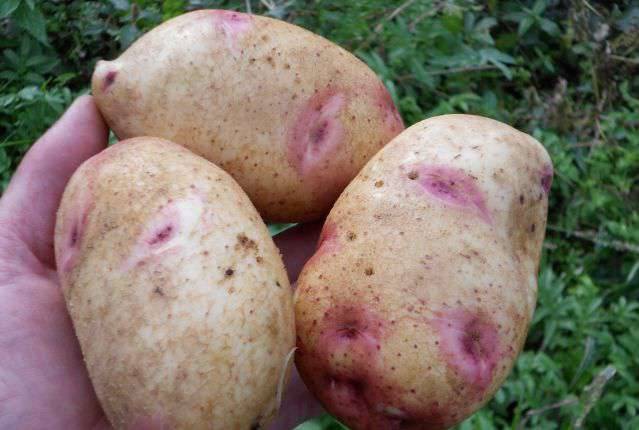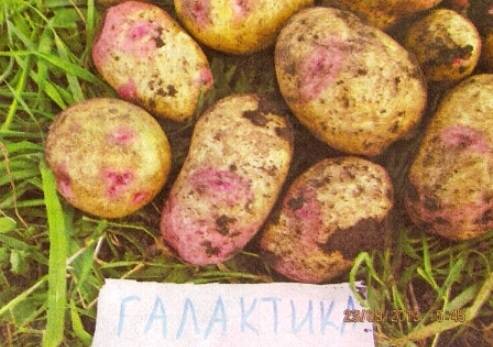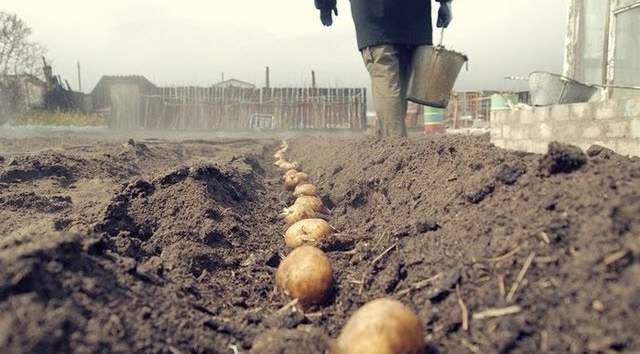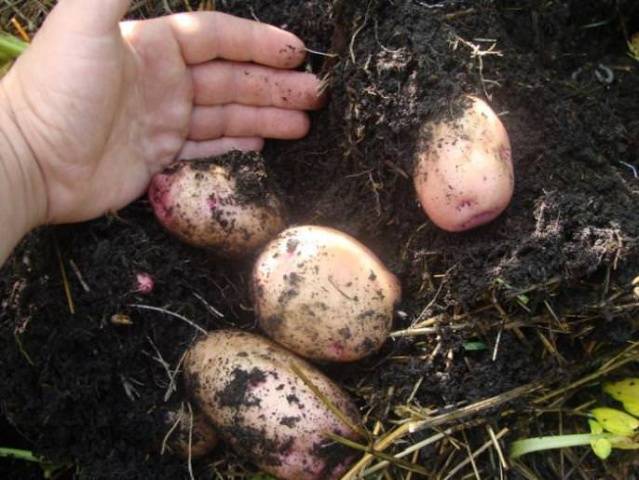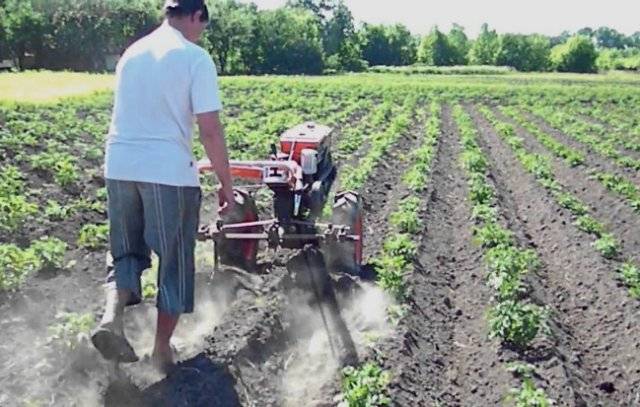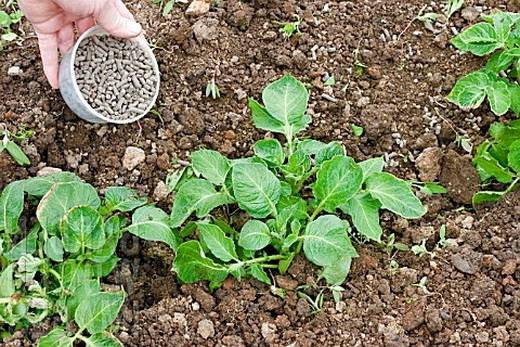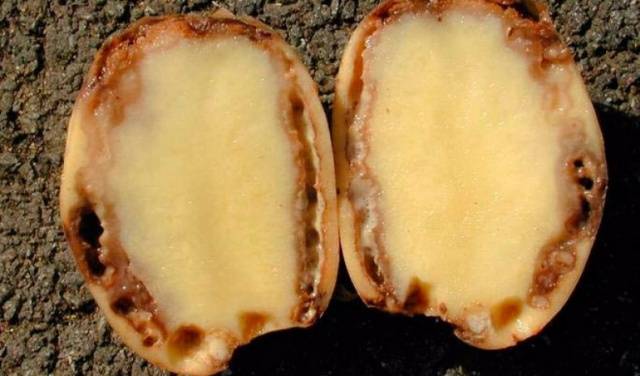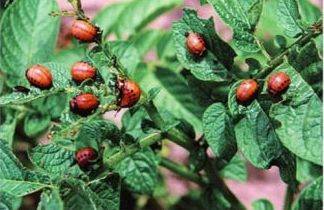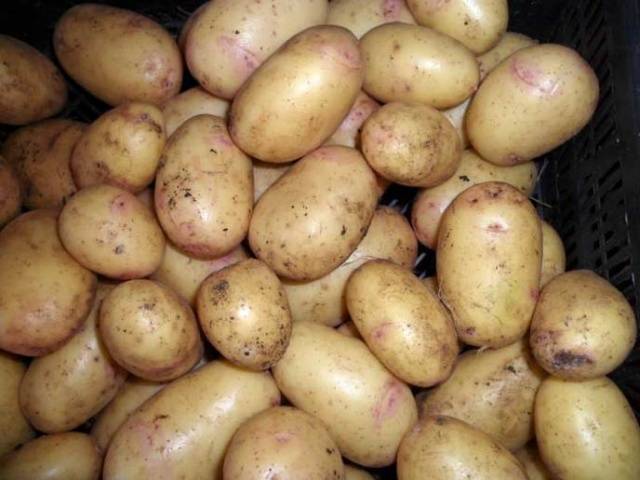Content
When growing potatoes, the grower focuses on the number of tubers, size and taste. Equally important is the adaptability of the variety to the climatic conditions of the region. An adapted crop is less sick and naturally yields a better crop. In a temperate climate, Galaktika potatoes will give birth well, even with the illiterate care of the gardener.
Origin story
Variety Galaxy is considered a novelty. The root crop was bred by breeders in Ireland. Initially, scientists set themselves the task of obtaining an early-ripening variety that is practically not affected by late blight. Additionally, we paid special attention to taste, as well as the possibility of long-term storage of the crop during the winter period. The culture has passed varietal tests, and was distributed on the territory of the Russian Federation.
Description and characteristics
In terms of ripening, the Galaktika variety is considered medium early. The culture is high-yielding, rarely affected by a nematode, late blight. The tubers have a good taste, excellent presentation, and are resistant to mechanical damage. For its intended purpose, the Galaxy variety is considered a table variety. The advantage of Irish potatoes is a consistent yield every season. Detailed characteristics of the variety are given in the table.
Growing season | maximum 90 days |
Starch content in pulp | from 16 to 18% |
Tuber weight | about 90 g |
The number of potatoes in one bush | from 12 to 14 pieces |
Productivity from 1 hectare | from 250 to 300 centner |
Percentage of preservation in winter in the cellar | about 95% |
Tuber skin color | white |
Pulp color | white with a yellowish tinge |
Disease immunity | nematode, late blight, cancer, medium resistance to scab damage |
Best growing areas | variety Galaktika is adapted to the climatic conditions of all regions of the Russian Federation |
Features of the variety | standard agricultural technology is suitable for cultivation, the aboveground part does not dry for a long time |
Features of tubers | the pulp does not darken quickly after peeling the skin, excellent taste |
Purpose | tubers are used for any dishes, starch, but are best in demand when making mashed potatoes |
Bushes of the Galaktika variety grow tall. The tops are powerful, they do not fall on the ground. Peduncles are medium in size. Corolla is bright red with a purple tint. The leaves of the potato are large, rich green in color. The shape of the root crop is oval. The eyes are small, colored in scarlet along the perimeter.
Advantages and disadvantages
The Irish potato variety Galaktika has a number of undeniable advantages:
- the culture is resistant to bacterial and viral diseases, rarely affected by late blight;
- good presentation of tubers;
- excellent taste of pulp;
- after peeling, the tubers do not darken for a long time;
- stable high yield every season.
Among the shortcomings, there is an average resistance to scab, as well as partially non-drying tops at the time of harvesting.
Landing
As for the Galaktika variety specifically, the culture grows best on the site of perennial and annual grasses, legumes, and cereals. In sandy soil, potatoes can be planted after lupine.
In the spring, before planting, during plowing, fertilizers are applied to replenish the soil with nutrients. The optimal time for planting tubers is early May. Potatoes are planted in rows. Row spacing - at least 60 cm.The distance between tubers - 35 cm.Planting potatoes are immersed to a depth of 10 cm.
About a month before planting, the tubers are taken out into a bright, damp room. Here they will germinate until they sprout. It is advisable to sort the potatoes in order to reveal the spoiled tubers.
Since autumn, many pests have hid in the ground for wintering. So that they do not destroy the potatoes immediately after planting, the tubers are treated with fungicides.
Care
Variety Galaxy will bring a harvest even to a lazy vegetable grower, but with good care it will show the best result. The culture loves loose soil and the complete absence of weeds. Basic cultivar care requires compliance with the following rules:
- Fertilizer for feeding the Galaktika variety should have an easily digestible form. The plant absorbs nutrients well from all types of compost, slurry, mixture of peat and manure.
- In case of freezing of the aboveground part by spring return frosts, the bushes are fed with a mineral fertilizer containing nitrogen.
- After the emergence of 100% of seedlings, the aisles are constantly weeded from weeds, loosen the soil. The procedure is carried out until the buds appear on the tops.
- When the stems are 20 cm high, Galaktika potatoes are spud. With a chopper or walk-behind tractor, they shovel the earth from both sides of the row.
- The variety loves moist soil. During watering, the soil is brought to a state of moisture content of at least 70% - maximum 85%.
When growing the variety Galaktika, the state of the tops is monitored. If the Colorado potato beetle begins to gnaw the leaves, the plantation is sprayed with pesticides.
The video shows the process of growing potatoes:
Hilling and feeding
Variety Galaxy, like any other potato, is not complete without hilling. The process stimulates the growth of the bush by removing weeds, improving oxygen access to the roots. Inside the earthen tubercles, tubers are tied and grow. During the season, two obligatory hilling are carried out and the third, if there is such a need. The first procedure is performed after the tops grow out with a height of about 15 cm. The second hilling of Galactica potato bushes is done 12 days after the first procedure.
Variety Galaxy responds well to feeding. The first fertilizer is poured into the holes when planting tubers.
During the growing season, Galaxy potatoes are fed three times under the root:
- At the initial stage of tops growth. Top dressing for the Galaxy variety is needed if the bushes grow slowly, the stems are thin, weak, the leaf blade has a pale color. Two recipes are usually used: 10 l of water / 1 tbsp. l. urea or 10 liters of water / 0.5 liters of mullein slurry. The finished solution in a volume of 0.5 liters is poured under the bush.
- During bud formation. Top dressing for Galaktika potatoes is needed to accelerate the appearance of peduncles. The solution is prepared from 10 liters of water, 1 tbsp. l. potassium and 1 tbsp. l. ash. If there is no potassium sulfate, add 1 glass of ash to the same amount of water. Pour 0.5 liters of the finished solution under each bush.
- During the flowering period. The third dressing of the Galaktika variety promotes the tying of tubers. The solution is prepared from 10 liters of water, 2 tbsp. l. superphosphate and 1 cup mullein slurry. Under each bush, 0.5 l of the finished solution is similarly poured.
Top dressing for the root of the Galaxy potato is performed after watering or precipitation, when the ground is still wet. The method is suitable for owners of a small plot. If the garden is large, watering each potato bush is difficult. For making use dry mixtures, making them by the method of scattering under the bushes.
The composition for three dressings per 1 bush is as follows:
- 0.5 tsp urea / 200 g of dry manure;
- 1 tbsp. l. ash / 0.5 tsp potassium;
- 1 tsp superphosphate.
After applying dry fertilizers, the potato plantation is watered.
Diseases and pests
Potato diseases are caused by the multiplication of bacteria. Often the person himself is to blame for violating the cultivation and care technology. Most diseases are difficult to cure, almost impossible.
Scab is considered a common disease. Some gardeners ignore this disease, considering it less dangerous. This is fundamentally wrong. Scab can destroy a lot of crops.
Of the pests, the Colorado potato beetle, wireworm, and nematode love to feast on potatoes. The first problem is easier to identify. When the Colorado potato beetle appears on the tops or yellow larvae, the potato plantation is sprayed with chemicals. Nematoda and wireworm eat tubers. You can find out about the appearance of a pest already by withering bushes. The development of parasites can be prevented by frequent mechanical tillage. When the first symptoms appear, chemicals are used.
Harvesting
Three months after planting, the Galaktika potato tubers will be ready for harvest. However, the exact date for each region is different due to weather conditions. Potato tubers are dug under a shovel or mechanical means, for example, a walk-behind tractor. For winter storage, they use an equipped vegetable store with good ventilation, a humidity of about 85% and an air temperature of 3aboutFROM.
Conclusion
Potatoes Galaxy is suitable for growing even lazy gardeners. However, you should not speculate on the undemanding variety, you need to provide the culture with at least minimal care.
